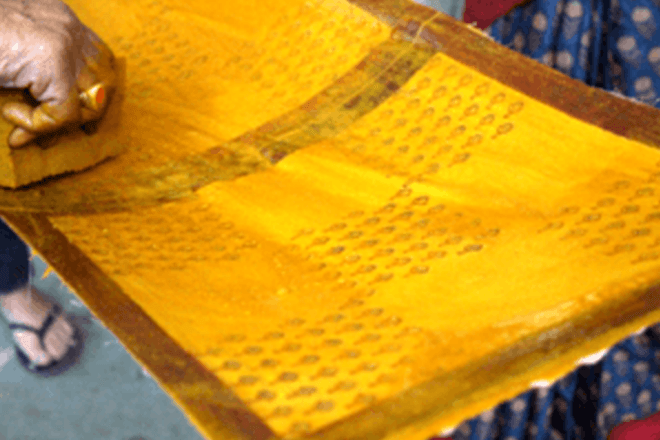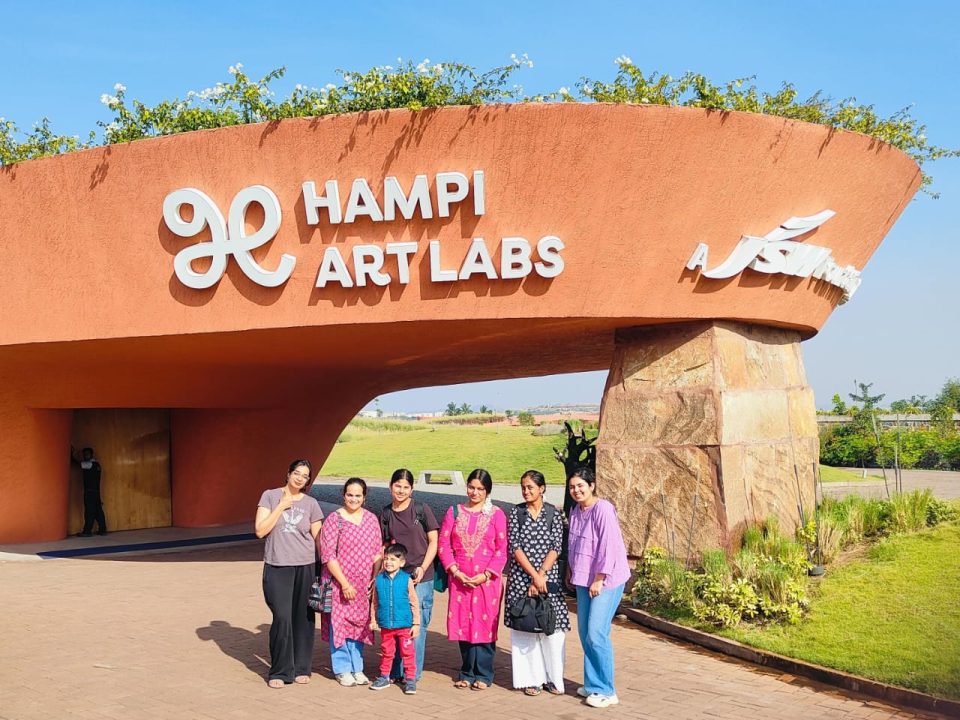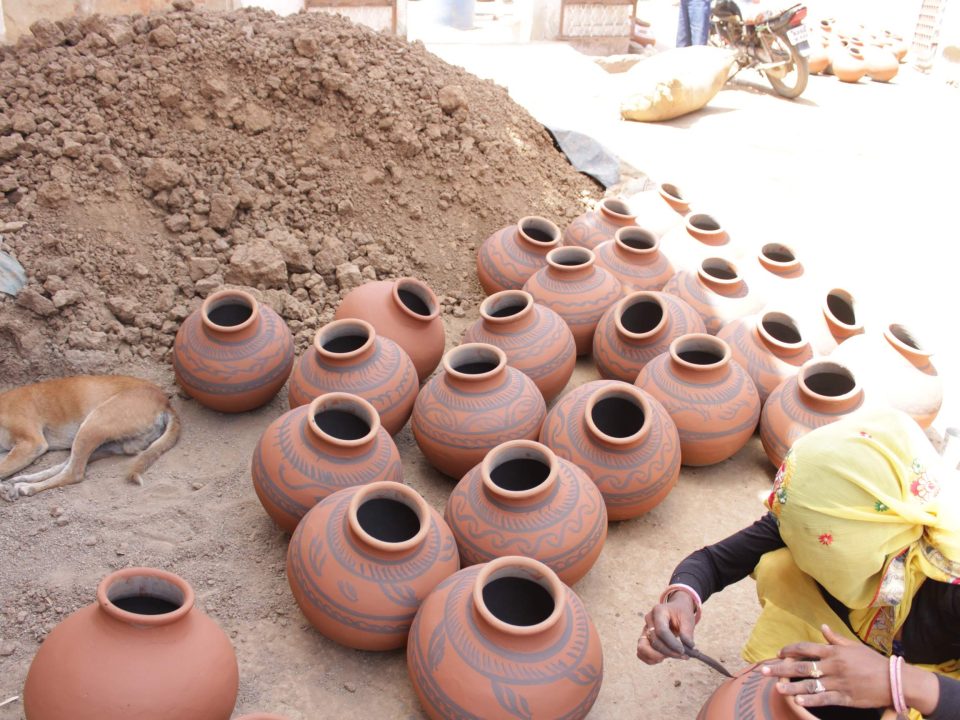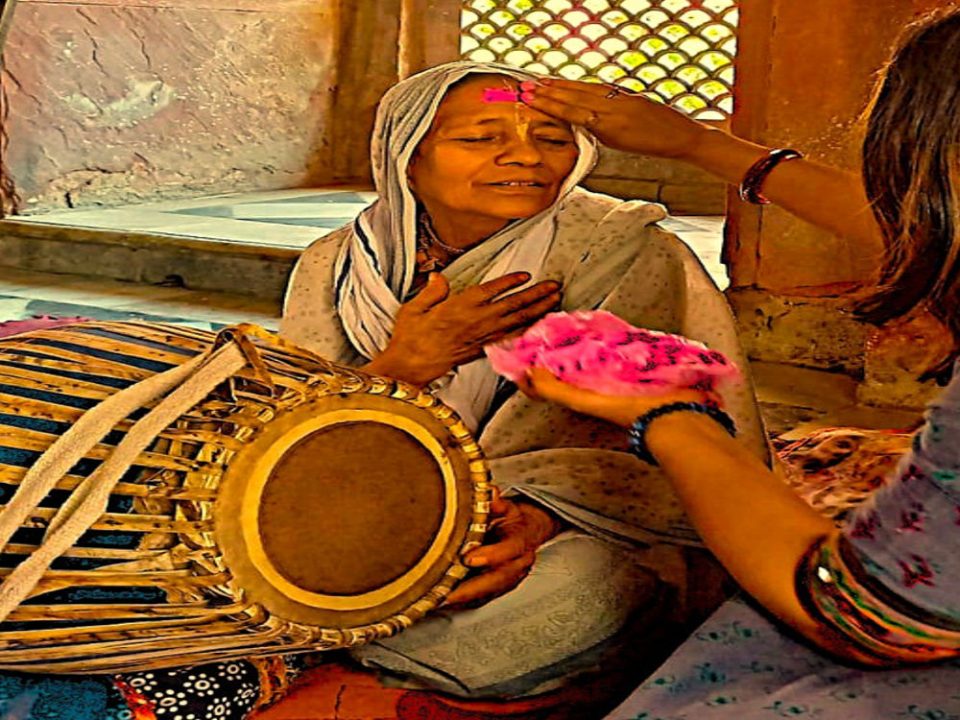Mendh ki Chapai workshop in IICD
THE PERFUMED FABRIC’
(A workshop on Mendh ki chapai)

The very imagination of India invokes in every heart, an unadulterated image of vibrance. This colourful rainbow is painted by its dynamic geography, diverse people, distinct culture and a million sparkles of a thousand unique crafts, beaded in the threads of utility, aesthetics and emotions.
But the increasing pace of time, changing human aspirations and interactions, and an ever transfiguring relationship between the humanity and its natural environment, has triggered a multitude of phenomenon of monumental scale, some progressive, some regressive, but each one definitely equipped with the potential of transforming the face of civilization and the planet as a whole. And one of them is the increasing loss of understanding of the contemporary relevance of ancient wisdom, and a consequent loss of the invaluable heritage.
Crafts in all their manifestations constitute a greater part of this heritage, and it is a pain that a great many of them are facing the fear of oblivion. ‘Mendh ki Chapai’, a kind of block printing employing wax resist technique, is done traditionally by the ‘Chippa’ community of Sanganer, Rajasthan. Generally clay dabu is used by printers for resist printing, but wax dabu locally called ‘Mendh’, has been preferred for the fabrics requiring repeated dyeing. ‘Mendh’ has better adhesive qualities so it can stand more number of dyeing cycles (15-20) than clay dabu which wears off quite easily. Thus deeper and darker shades can be easily achieved through ‘Mendh’. ‘Mendh’ is a carefully curated composition of Beeswax, castor oil, and Cheed ka ras. The natural fragrance of Cheed ka ras weaves through the soul of fabric and endows upon it a delicate aroma, which de-toxicates the very senses of the user. Sadly this perfumed art is also one of the fast extinguishing legacies.
So Indian Institute of Crafts and Design, an Institution working on the mandate of promotion, preservation and education of crafts and craftsmen, and Textiles and Clothing Research Centre, a society dedicated to the conservation and preservation of textile heritage of India, came together for the organisation of an interactive hands-on workshop on 2nd and 3rd of March 2019, in the premises of IICD, in a humble effort, towards the revival of this noble craft.

This auspicious occasion was honoured by the presence of Dr. Anamika Pathak, President TCRC, and Curator, National Museum, New Delhi. The three decades of her curatorial career are credited with milestone exhibitions like ‘Indian textiles’, ‘Nizam’s Jewels’, ‘Alamkara’, ‘the word is sacred and sacred is the word’, and many more. She is closely associated with several academic and cultural institutions like, NIFT, Lady Irwin college, Delhi university and has authored many books like, ‘Pashmina’, ‘Indian costumes’, ‘Arts of Calligraphy and beyond’. She truly is a pioneer in the field of studies, promotion and preservation of Indian arts, culture and heritage.
Also gracing the occasion were Dr. Binoy Kumar Sahay, Joint Secretary TCRC, Deputy Curator (Numismatics and Epigraphy) National Museum Delhi, and Nodal officer for digitization of National museum collections, Dr. Simmi Bhagat, Founder member TCRC, and Associate Professor at the Department of fabric and apparel science, Lady Irwin College, University of Delhi, Ms. Smita Singh, Chief Editor TCRC and an independent Textile conservation consultant, Mr. Zahid Ali Ansari, Treasurer TCRC, and Deputy Curator National Museum, New Delhi and Ms. Sonal Gaur, a textile researcher.


The event was marked by the felicitation of the pioneers of this craft for their valuable contribution to its continued survival. Shri Madhav Lal Udaiwal ji, the eldest surviving practitioner of the craft who humbled everyone present with his ancient knowledge; Smt. Bhawari Devi ji, who was honoured with the National award in 2007, for her contribution to the craft; Shri Vallabh Kotiwal ji, a practitioner of Mendh ki chapai; Shri AwadheshKumar Ji, a national award winner in years 2007 and 2008 for his Bajra print sari and Banjara print sari; Shri Suraj NarayanTeetanwala Ji from Bagru, a national award winner for his magnificent block printing; Shri Ram Kishore Derawala ji, a Padam Shri awardee for his contribution to Dabu priting and Shri Janakidas Nahar ji, a distinguished block printer from sanganer.
The workshop was a confluence of the learned and the learner in a composite environment, synthesising an ecosystem of knowledge and exchange. The inclusive nature of this initiative brought curators, artisans, researchers, historians, preservationists, students, home makers, academicians, and people from many other walks of life on the same platform.





We solemnly hope that this purity of purpose, intensity of learning and diversity of character will bear wings of awareness and fly this olden intelligence of efficacy and aesthetics to populace of varied fields, cultures, demography, societies and geographies.
– BY Nivedita Narayan
(Asst. Professor, IICD)





